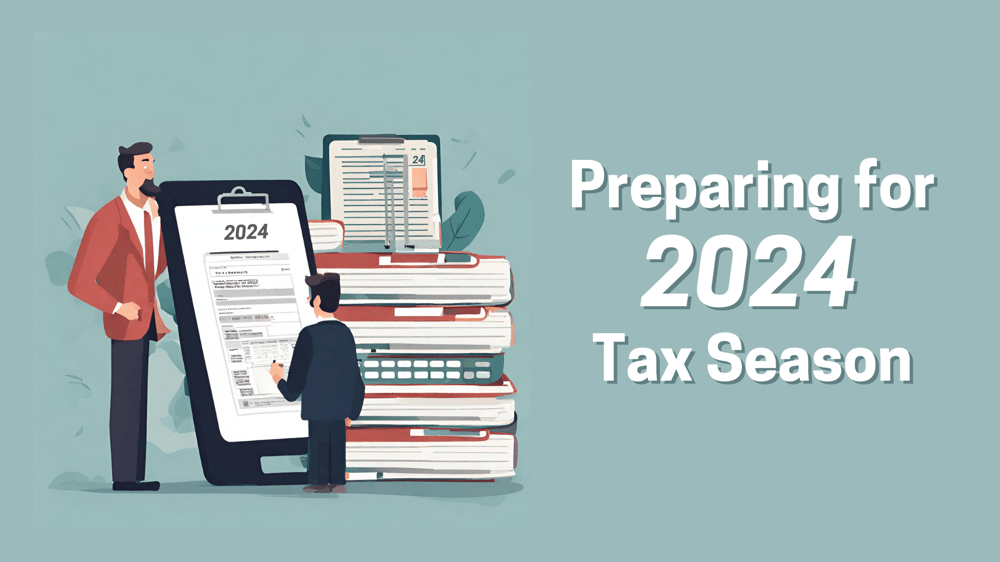Yes, NOTICENINJA is corporate tax notice compliance software that automates key workflows including notice assignments. The platform employs a rule-based system that can manage multiple level rules and ensure notices are directed to the appropriate stakeholder. As a result, you’ll never have to worry about notices being misdirected or slipping between the cracks.
.png)
Steps to Get Ahead for 2024 Tax Season

09 October
The 2024 tax season is approaching, and for corporations, payroll companies, professional employer organizations (PEOs), and CPA firms, early preparation is key to a seamless tax filing process. Navigating complex tax regulations, managing payroll, and providing comprehensive financial services require careful planning. In this blog, we'll provide a tailored countdown with crucial steps to ensure that your organization is well-prepared for the 2024 tax season.
Step 1: Organize Payroll and Financial Records
Start by organizing your payroll records, financial statements, and tax-related documents. This includes employee payroll records, income and expense statements, and any other financial documentation relevant to your organization and clients. Ensure that these records are accurate, up to date, and easily accessible.
Step 2: Review Changes in Tax Laws and Regulations
Stay informed about any recent tax law changes and regulations that may impact your organization or clients. Consult tax experts or utilize reputable tax research resources to understand the implications of these changes and make necessary adjustments to your tax strategies.
Step 3: Verify Employee Classification Compliance
For PEOs and organizations that deal with contingent workers, ensure that employee classifications are accurate and comply with current regulations. Misclassification of workers can lead to tax liabilities and legal issues.
Step 4: Perform a Payroll Tax Withholding Check
Review payroll tax withholdings for accuracy. Verify that payroll systems are withholding the correct amounts for federal, state, and local taxes. Adjust withholding if necessary to avoid underpayment or overpayment of taxes.
Step 5: Maximize Deductions and Credits
Identify opportunities to maximize deductions and tax credits for your organization and your clients. This could include exploring tax incentives for business investments, research and development credits, or employee retention credits.
Step 6: Ensure Adequate Record-Keeping
Maintain meticulous records of all financial transactions, payroll data, and tax-related documents. Having a robust record-keeping system is crucial for compliance, audit preparation, and efficient tax filing.
Step 7: Plan for Tax Season Workload
Anticipate the increased workload during the tax season and allocate resources accordingly. Ensure that you have a qualified and adequately staffed team to handle the influx of tax-related tasks, including tax return preparation, auditing, and client consultations.
Step 8: Utilize Tax Compliance Software
Consider leveraging tax compliance software and technology solutions to streamline your tax processes. Many tools are available to help corporations, payroll companies, PEOs, and CPA firms automate calculations, reduce errors, and facilitate electronic filing.
Step 9: Stay in Touch with Clients
Maintain open communication with clients, providing guidance on tax planning, compliance, and deadlines. Educate them about any changes that may affect their tax situations, and encourage them to submit necessary documents and information in a timely manner.
With proper planning and organization, corporations, payroll companies, PEOs, and CPA firms can navigate the 2024 tax season efficiently and effectively. Early preparation not only ensures compliance with tax laws and regulations but also allows for better client service and reduced stress during tax season. By following these steps and staying proactive, you'll be well-prepared to meet the unique tax challenges of your industry and provide valuable financial services to your clients.
Register for our upcoming Webinar: Unlocking Success in 2024: Key Tax Updates with KPMG Tax Managing Partner Mindy Mayo and Notice Ninja CPO | Cofounder Rick Pinkerman on Tuesday November 14, 2023.
